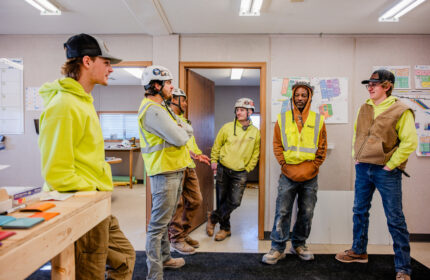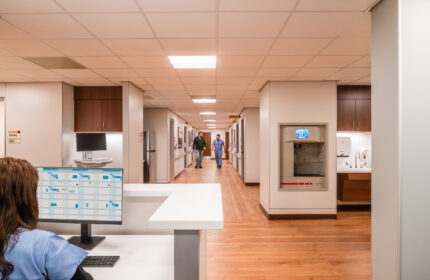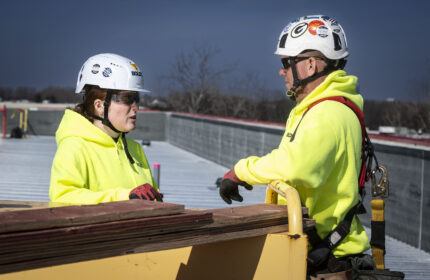Blog
Leftover Hospital Construction Materials Get New Life as Sleeping Pod for Homeless
Building a hospital generates a lot of construction debris. If any hospital construction materials can be is salvaged and put to new use, it reduces what goes into the landfill and can even benefit a worthy cause.
Sutter Health has built several hospitals in the California Bay Area over the past 15 years, but its Santa Rosa Hospital expansion is the first to use left-over construction material to help the homeless. The re-purposed materials are being used for a small sleeping unit, part of a program that offers a temporary country refuge for homeless people and residents of San Francisco’s Tenderloin district. HerreroBoldt, general contractor on the Sutter Hospital expansion, initiated the proposal idea to re-purpose construction materials from project mock-up to a sleeping pod.
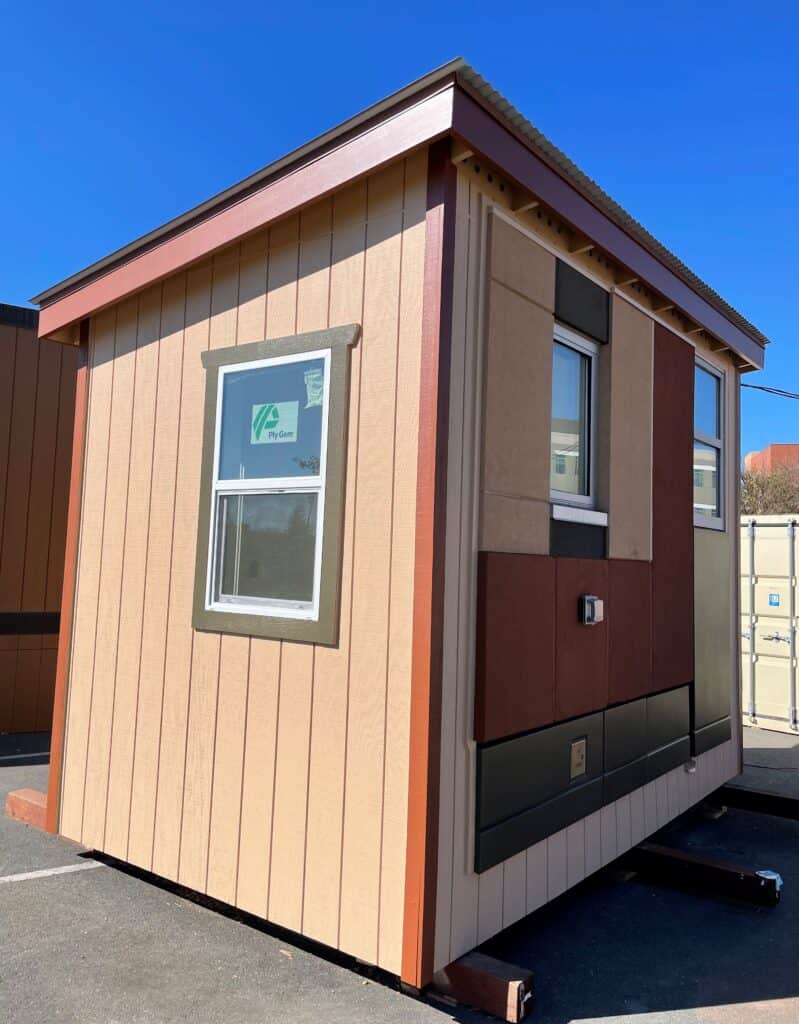
“You try to troubleshoot things early before the final project,” is how Senior Project Manager Matthew Boersma describes the purpose of the mock-up.” They sometimes are tossed out after they serve their purpose on the construction site, “but not this time—we’ve recycled it.”
Hospital Construction Materials Recycled
Inspired by a presentation from Lean Construction Institute, which looks at ways to eliminate building waste, Boersma learned of an office project in Portland, Oregon that redesigned its exterior mock-up for a tiny house. “I was excited about trying it out on our project,” Boersma said.
On average, construction and demolition in the U.S. contributes to an estimated 23 percent of the national waste stream. Although HerreroBoldt was able to recycle almost 80% of building materials on this project, they continue to look for opportunities to improve.
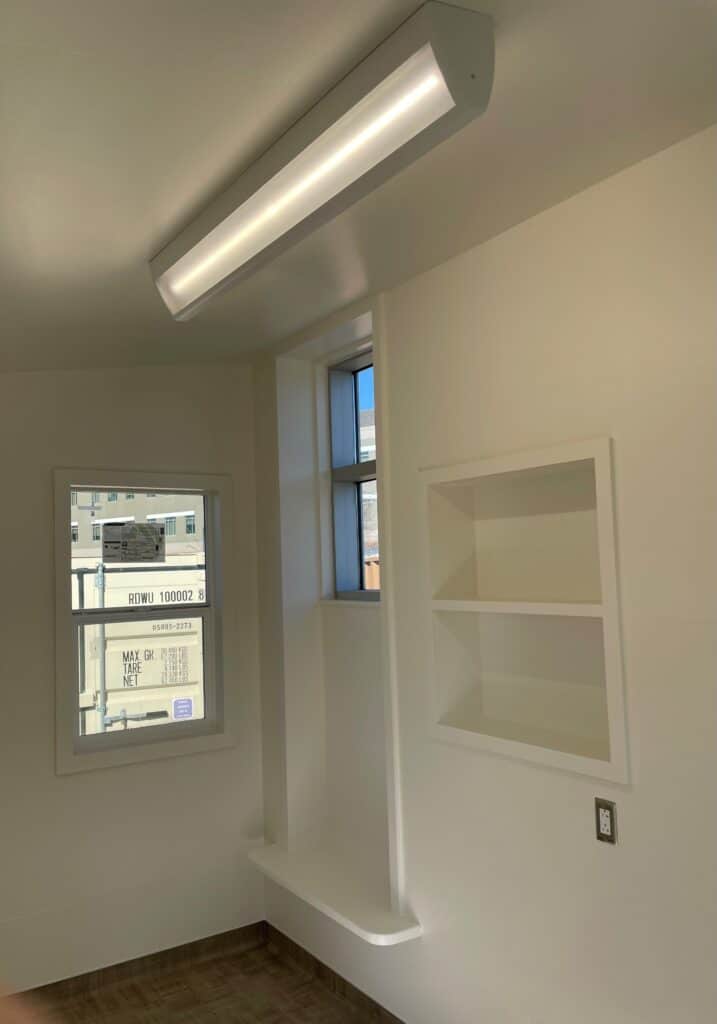
Community Impact
Mock-ups are relatively high-cost structures that serve a singular construction need for a short period of time. The material was originally part of an exterior “mock-up” that allows pre-construction teams to test finishes, connections, and watertight performance for the outside envelope of the building.
Giving the construction materials a second life as a sleeping shelter introduces more sustainable processes and makes a positive impact on local communities, according to Boersma. “I feel like what this has done is given us a chance to test re-purposing of mock-ups. We want to look at opportunities to build more of these, using this as a case study,” he said. “It turned out to be a really nice, finished product.”
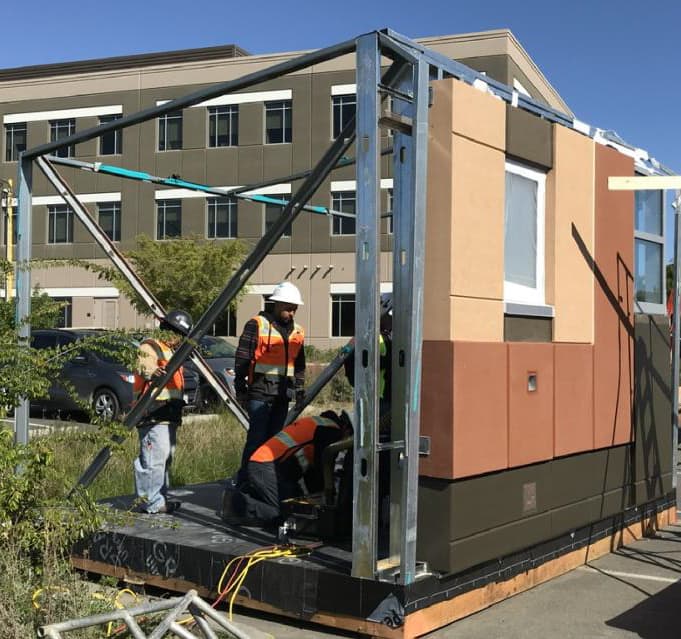
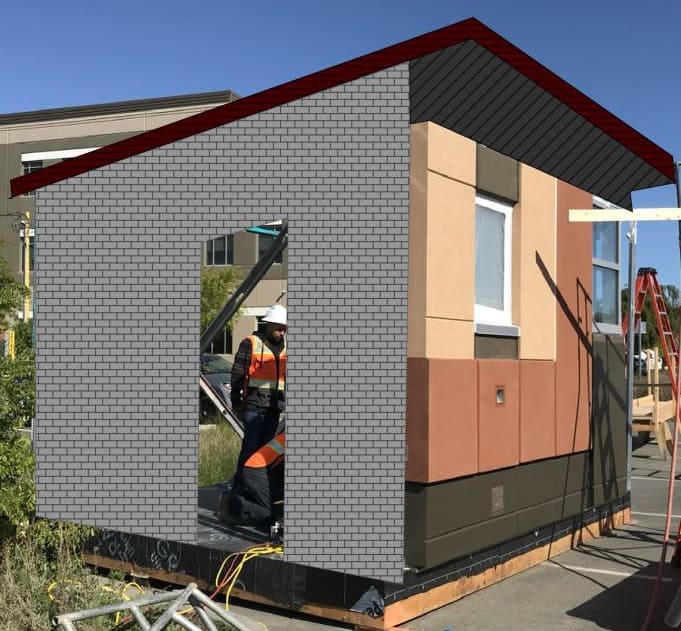
The newly built sleeping pod has been added to a five-acre retreat on Little Valley Road, Fort Bragg, operated for more than 22 years by San Francisco City Impact. The faith-based organization has a rescue mission in the Tenderloin, along with a school, volunteer center and other programs that serve the homeless, the elderly and needy families.
For City Impact, the donation is especially welcome and could be the first of more sleeping pods that will be used to bring people to Mendocino County to help them deal with their problems, pain, and addiction issues. “The idea is to provide a break, a time for healing and restoration away from the busy city, said Ralph Gella, general manager of San Francisco City Impact.
Market Topic
Healthcare Construction
About The Boldt Company
The Boldt Company (Boldt) is a leading professional construction services firm with customers across the United States and is a subsidiary of The Boldt Group. Founded in 1889, Boldt is a fourth-generation family and employee-owned firm headquartered in Appleton, Wisconsin. Boldt is recognized as a pioneer in Lean construction and in the industrialized construction space. Boldt operates 18 offices across the U.S. that serve customers in healthcare, power, industrial, education, automotive and commercial markets.
